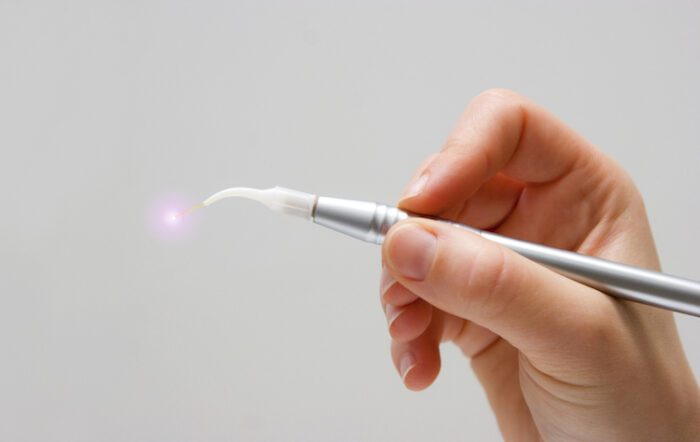Frenectomies, a common dental procedure, involve the removal of a frenulum. A frenulum is a small fold of tissue that restricts movement. This tissue can be found under the tongue, upper lip, or in other areas of the mouth. When a frenulum restricts movement, it can cause various issues, including speech difficulties, breastfeeding problems in infants, and dental health concerns. Traditional methods for frenectomies use scalpels or scissors. These methods can be effective but come with drawbacks. Laser dentistry offers a modern alternative.

Benefits of Laser Dentistry for Frenectomies
Precision and Accuracy
Laser dentistry often enhances precision and accuracy. A laser’s focused beam targets the tissue precisely, reducing the risk of damaging surrounding areas. Dentists can control the depth and intensity of the laser for more accurate cuts. The precision of lasers also allows for more intricate procedures. Dentists can perform complex frenectomies with greater confidence. This level of accuracy is particularly important in sensitive areas like the mouth.
Reduced Pain and Discomfort
Pain and discomfort are common concerns for patients. Laser dentistry helps minimize these issues. The laser seals nerve endings as it cuts to help reduce the amount of pain experienced and minimize bleeding. Patients often report less discomfort post-procedure. The reduced pain and discomfort make the procedure more appealing. This is especially true for patients with low pain tolerance.
Faster Healing and Recovery
Laser frenectomies often promote faster healing. The laser sterilizes the area as it works, reducing the risk of infection. It also stimulates tissue regeneration. Patients often experience quicker recovery times. Traditional methods may require longer healing periods. The laser’s ability to seal blood vessels reduces bleeding, which contributes to a cleaner surgical site. The reduced risk of infection means fewer complications. Patients are less likely to need follow-up treatments. The overall recovery process is typically smoother and quicker. This is a significant advantage for busy individuals.
Less Need for Anesthesia
Laser dentistry often requires less anesthesia. The precision of the laser reduces the need for numbing agents. This is beneficial for patients with anesthesia sensitivities. Patients could avoid the groggy feeling that often follows anesthesia. This is particularly advantageous for children. Parents are often concerned about the effects of anesthesia on young patients. Laser dentistry helps alleviate these concerns.
Better Outcomes for Children
Frenectomies are common in children. Laser dentistry often provides better outcomes for younger patients. The procedure is less intimidating as the absence of scalpels or scissors makes it less frightening. It also often results in less post-operative discomfort. Parents usually prefer laser frenectomies for their children as traditional methods can be more traumatic for young patients.
Enhanced Safety
Laser dentistry helps enhance safety. The laser’s sterilizing effect reduces infection risk and minimizes the need for sutures. This reduces the risk of complications. Traditional methods often require stitches, which can increase the risk of infection and other issues. The laser’s ability to seal blood vessels reduces bleeding. This contributes to a safer surgical environment. Patients are less likely to experience post-operative complications. The enhanced safety makes the procedure more appealing. This is particularly important for patients with health concerns. The reduced risk of infection is a significant advantage.
If your child has a tongue or lip tie, Pediatric Dentistry of Winter Park is here to help. Our use of laser dentistry has greatly improved the frenectomy process for many patients. Contact us today to schedule a consultation and learn more about our use of laser dentistry technology.
